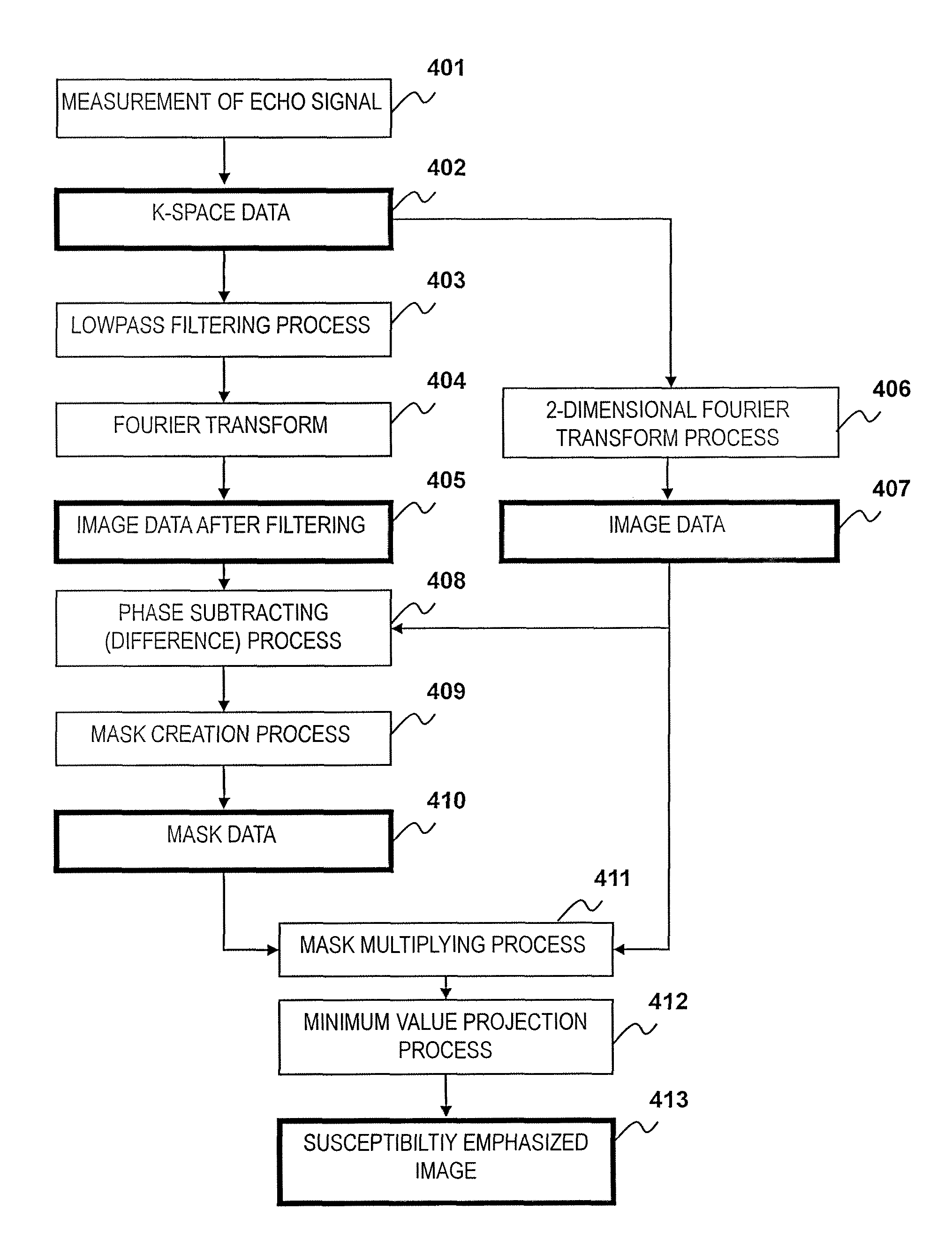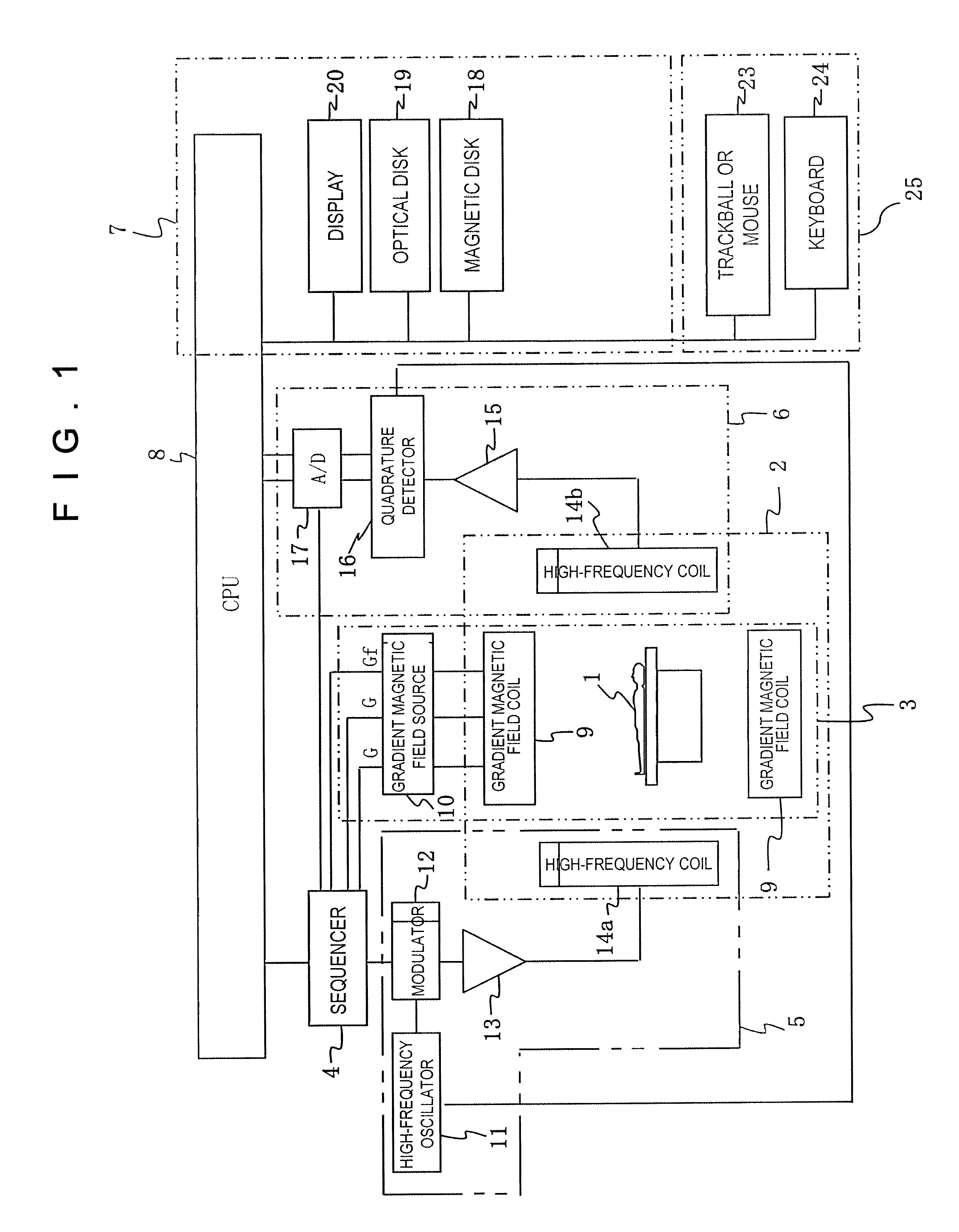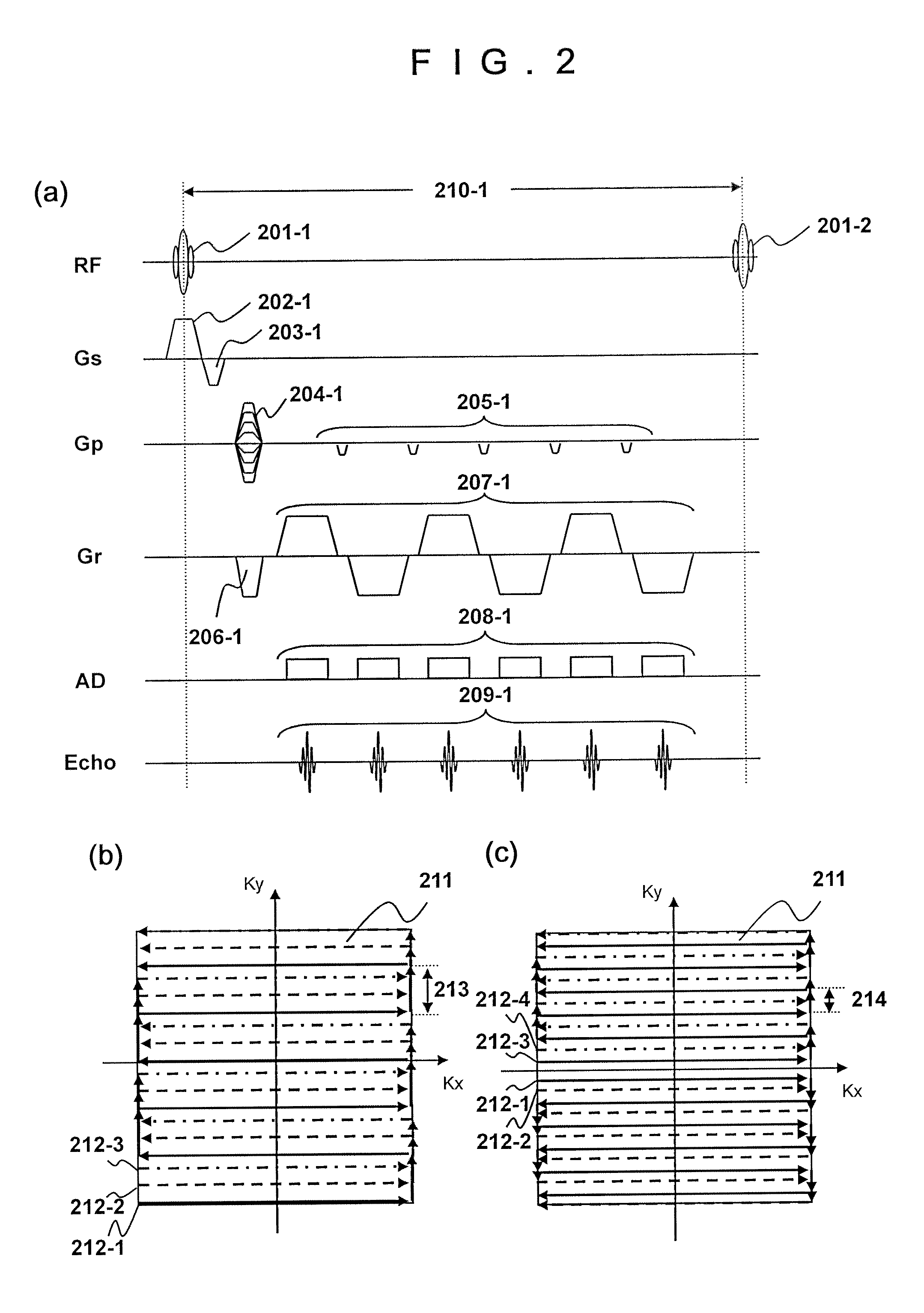Magnetic resonance imaging apparatus and method configured for susceptibility-emphasized imaging with improved signal-to-noise ratio
a magnetic resonance imaging and signal-to-noise ratio technology, applied in the field of susceptibility-emphasized imaging, can solve the problems of long imaging time, inability to be set short, and the signal-to-noise ratio deteriorates when an image is taken, and achieves the effect of preferable signal-to-noise ratio and susceptibility-emphasized
- Summary
- Abstract
- Description
- Claims
- Application Information
AI Technical Summary
Benefits of technology
Problems solved by technology
Method used
Image
Examples
first embodiment
[0066]The first embodiment of the MRI apparatus and the susceptibility-emphasized imaging method related to the present invention will be described. The present embodiment divides the echo signal group measured using the echo planar method into a first echo signal group measured in the first half and a second echo signal group measured in the last half, and creates image data from the first echo signal group and mask data from the second echo signal group. The embodiment will be described in detail based on FIG. 5 and FIG. 6.
[0067]First, the sequence of the multi-shot echo planar method of the gradient echo type related to the present embodiment and the K-space data acquired using the sequence will be described referring to FIG. 5. FIG. 5(a) shows only phase encode gradient magnetic field axis (Gp) and an echo signal from among the sequences described in FIG. 2(a), and the other sequences are omitted since they are the same as FIG. 2(a). While an example using the echo planar method...
second embodiment
[0093]Next, the second embodiment of the MRI apparatus and the susceptibility-emphasized imaging method related to the present invention will be described. The present embodiment applies a phase blip gradient magnetic field pulse for every two echo signals, and the echo signal group measured in odd-numbered order is set as a first echo signal group and the echo signal group measured in even-numbered order is set as a second echo signal group. The differences from the first embodiment are that the sequence diagram which applies a phase blip gradient magnetic field pulse for every 2 echo signals, and the placement of data in the K-space. The present embodiment will be described below in detail by explaining only the difference from the first embodiment, referring to FIG. 9.
[0094]First, the sequence diagram of the present embodiment will be described based on FIG. 9(a). FIG. 9(a) is the sequence diagram of the multi-shot echo planar method of the gradient echo type related to the prese...
third embodiment
[0105]Next, the third embodiment of the MRI apparatus and the susceptibility-emphasized imaging related to the present invention will be described. The present embodiment reduces imaging time by making the number of measurement of echo signals for a mask and the number of measurement of echo signals for an image different. The differences from the first embodiment are the sequence diagram due to the difference of the measurement numbers of echo signals for a mask and echo signals for an image, and the placement of data in the K-space. Only the difference from the first embodiment will be described below.
[0106]First, the sequence diagram of the present embodiment will be described using FIG. 10(a). FIG. 10(a) shows the sequence diagram by the multi-shot echo planar method of the gradient echo type related to the present embodiment, and only an echo signal (Echo) measured by one repetition (shot). Explanation on the other parts will be omitted since they are the same as the sequence i...
PUM
 Login to View More
Login to View More Abstract
Description
Claims
Application Information
 Login to View More
Login to View More - R&D
- Intellectual Property
- Life Sciences
- Materials
- Tech Scout
- Unparalleled Data Quality
- Higher Quality Content
- 60% Fewer Hallucinations
Browse by: Latest US Patents, China's latest patents, Technical Efficacy Thesaurus, Application Domain, Technology Topic, Popular Technical Reports.
© 2025 PatSnap. All rights reserved.Legal|Privacy policy|Modern Slavery Act Transparency Statement|Sitemap|About US| Contact US: help@patsnap.com



